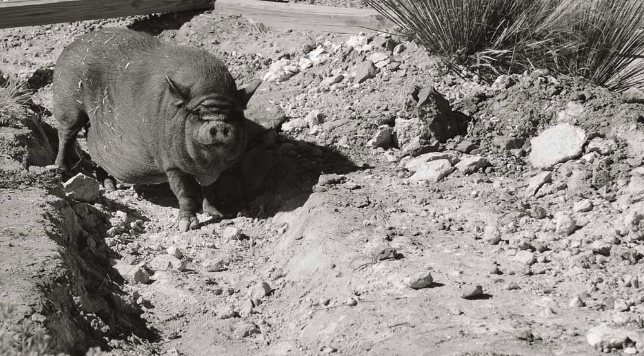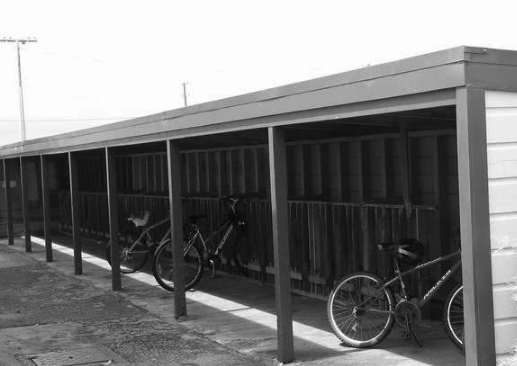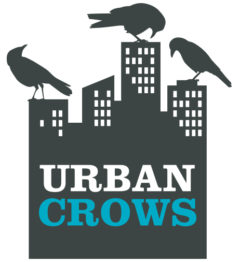A Cheese Primer for Investors
There’s nothing like a cheesy marketing cliché in a news release to make you immediately buy a bucket-load of a company’s stock, right? Spend five minutes talking to any IR professional at an investor conference and see how many clichés you can spot. This is the kind of stuff I mean.
“We’re undervalued relative to our peers and poised for success.”
“Our management is best-in-class with a proven track record”
“That’s the steak, now here’s the sizzle.” (wtf?)

Anyone who follows the junior mining sector will -just maybe- have spotted the odd cliché tucked away in marketing materials, or in one of the many stale corporate PowerPoints that end up unread on a dull home page. The judicious use of meaningless phrases is an art form that our industry has perfected, and sadly we all use them, UrbanCrows included. I admit it -guilty as charged- before you start pointing fingers. It’s hard to come up with marketing copy that sounds fresh without delving into the bloated lexicon of hackneyed phrases at some point. So as a public service to my readers, I’ve polled some mining friends (thanks, you know who you are) to compile a short list of the ones that we see regularly, and that we love to hate.
In this post, which is admittedly my longest yet, I take a tongue-partly-in-cheek look at the common ones, and briefly explain what each one really means, assuming they mean anything at all, and outline how they should be used. A handful of them aren’t so much clichés as misused technical or financial terminology, but we all agreed they should be included because they pop up regularly in corporate guff.
I’ve also decided to add newly-spotted cliches as I come across them, so that this post can serve as an important historical record for future generations of mining promoters in search of inspiration. In no particular order:
“Creating Shareholder Value”
Proper Usage On the cover of a corporate brochure linked to another idea using “by”, as in “Elephant Country Mines. Creating shareholder value by not exploring in this crap market.”
This actually means not destroying shareholder value by wasting investor funds on shitty exploration projects, but it sounds much better, much more positive, if we use the action verb “To Create”. Clever, eh?
“Undervalued”
Proper Usage In print or spoken during investor presentations. “Management believe that the company is significantly undervalued relative to its peers.”
Peers worth more than you? That means you haven’t found anything, or management can’t promote. And if you believe in efficient stock markets, this one is 24-carat cliché bull shit every time. Call me a cynic.
“Elephant Country”
Proper Usage Generally spoken only, but can be used in corporate PowerPoints. “Yeah, we’re exploring in elephant country.”
Your company is looking for bigly deposits. It’s working in a mineral belt that hosts huge deposits, enormous, world-class (see below) mineralized dogs testicles that stick out like so many mixed-metaphor elephants striding majestically across the Serengeti. What could be more exciting for investors than that? Voiseys Bay? Nothing on ours. Bingham Canyon? Puny. Antamina? Girly. Elephants – that’s us.

“(insert anything here) Equivalent Grade”
Proper Usage Press releases, corporate PowerPoints, technical reports, websites…in fact, you see it bloody everywhere
If Low Grade Resources Inc has found gold, or copper say, but not enough to impress anyone or signal an economic deposit, the easiest way to big up the numbers is convert the value of another metal/element in the assays (selenium? antimony? silicon?) into an apparent gold grade, chuck all the numbers into a large, leaky bucket labelled Gold Equivalent Ounces, and quote the new, bigger number of ounces in your marketing materials. Hey presto, it looks really good now, right!?
Don’t get me wrong, there’s a rightful place for quoting equivalency calculations when they’re done properly, following the NI43-101 rules, with only the potentially economic metals included, using realistic metal prices and preferably including some accounting for the different metallurgical recoveries you’re likely to see for each metal. Anything else is smoke and mirrors designed to put lipstick on a small sweaty ditch-pig.

“The Big Boys / Majors Are Sniffing Around.”
Proper Usage Generally spoken, quietly, at conference booths. “Between you and me, the big boys are back and they’re sniffing around.”
This will be whispered in a very hush-hush tone to imply that you -you lucky, lucky devil- are being given a major insider secret – the company has attracted the interest of a multi-billion dollar producer. The truth is generally more mundane. At some point in the last 1-2 years, a junior geologist for a major mining company stumbled by the PDAC booth, brutally hungover (“Brass Railed”), dropped off a card, and picked up the corporate PowerPoint. It was promptly abandoned at a food-scrap covered lunch table, amidst a growing pile of other discarded flyers, as they realised through a beer-pain fog that they really don’t want to carry a huge bag full of promo shit around the hall. The presentation remains there to this day, in Convention Centre South, unloved, unread and still deeply uninteresting.

“Pathway To Production / Near Term Cashflow”
Proper Usage With a company name on the cover of a corporate brochure or home page. “Elephant Country Mines. On the pathway to production.”
Like the mythical road to Rivendell, the home of the Elves in the Lord of the Rings, the pathway to production exists only in fairy tales for most explorers. IR professionals develop a starry look in their eyes when using this one. Their voices will crack as they whisper the magic words “We have a clear path to production ahead of us”. And then, like a congregation answering the priest during mass, investors should respond in unison in similarly hushed tones “How long is the permitting process in BC/Peru/Nevada these days?” at which point the IR person turns away from you, muttering curses to the one true God, Mamon. Amen.

“Proven Track Record (see also Creating Shareholder Value)”
Proper Usage On a pop-up booth stand, or spoken in a presentation linked to another idea by the word “of” as in “Our management team has a proven track record of creating shareholder value.”
If nobody outside of your office has ever heard of anyone on your management team, you are required under current Canadian mining regulations to use this phrase liberally throughout your corporate literature to bring a small, slimy dribble of reassurance to skeptical investors. You could also say proven track record “of mediocrity” with no fear of contradiction.

“Independent Research”
Proper Usage Generally used in print, on line and in investor presentations. As in “Payola Capital has just initiated independent research coverage on Midden Heap Mines.”
Remember, there’s no such thing as independent research. It’s out back, hiding behind the bike sheds holding hands with the Chinese Wall, trying to avoid the bullies from corporate finance and institutional sales who’ve been picking on them both, trying to make them say things they don’t want to, otherwise they won’t get their bonus allowance.

“Grade Is King”
Proper Usage Investor presentations, booth chats & ore reserve statements in corporate PowerPoints usually with an exclamation mark!
We have grade, lots of it and remember GRADE IS KING! Grams, ounces, lbs, % -we have it all. More than the poor schmucks at the booth next door; all they have is blue sky (see below). And as we all know, grade is the biggest single positive influence on a project’s pre-tax IRR and NPV4 (see below). But what we don’t have is tonnes or workable metallurgy, but hey, details.
“World Class / Tier One / Top Quartile Deposit” (see also Tiger By The Tail)
Proper Usage Can be used in print, on line or in investor presentations. As in “Nutjob Exploration is exploring in the Mid Cloacal Belt of South America which is known to host World Class deposits.”
World class should mean a deposit in the top 5 or 10 of its kind globally in terms of size, grade and economics. But in the current investment climate, with historically low discovery rates, it’s fair to say that any company that finds anything, anywhere, that contains any metal on the periodic table, can probably make a claim to have a Tier 1 or World Class discovery. It’s a really, really low bar at the moment and nothing to be proud of.
“Lowest Quartile Operating Cost” (see also Tier One / World Class)
Proper Usage Can be used in print, on line or in investor presentations. As in “Cow Pat Mines’ copper mine in Brazil is in the lowest quartile in terms of operating costs.”
If your company thinks it can mine metal or other stuff really, really cheaply, they’ll invariably say their project will be “lowest quartile on the cost curve”. They’ll back up the point in the corporate brochures with lots of graphs and statistics on production costs from mines around the world, gleaned from a stolen copy of a hugely expensive report published by one of the many commodity research firms. A large red arrow on the chart will point to where your company thinks it will be when production starts.
It’s all lies. When production finally starts, they’ll immediately realise the cost predictions were horribly out of whack and quietly delete all the historical corporate PowerPoints from the website so as not to feed the class-action law suit out of the US that’s bound to follow for misleading investors.
“Highly Leveraged To Commodity Prices”
Proper Usage Used in cash flow model explanations and executive summaries of rose-tinted engineering studies, as in “The project is highly leveraged to commodity prices.”
Even the pre-tax NPV4 (see below) for your project is mediocre because of incredibly high operating costs / capex / sustaining capex etc etc. The project would look a shit-ton better -still uneconomic but slightly less than it currently is- if key metal prices increased 40% overnight, which happens often right? Canadian regulations mandate that the next sentence in the executive summary reads “Management are currently examining blue-sky optimization pathways for the project and are confident that capital expenditures and operating costs can be reduced.” Indeed.
“Phased Expansion”
Proper Usage Used in presentations, news releases and on websites, as in “We’re proposing a phased expansion of a low-cost starter pit on the Bigged Up Gold Zone”
Call the men in white coats. Your company’s management has gone completely bonkers and actually believes it knows how to do something that no mining company has ever achieved in the history of mining: build a smaller crap mine and then expand it successfully to a larger crap mine.
“Very Low Capital Intensity”
Proper Usage Used in presentations, news releases and on websites, as in “Management is anticipating that the Bigged Up Mine will have very low capital intensity”
Your company’s mine will cost at least $1m per annual pound of copper production to build, resulting in a NASA-sized capex of US$10B versus your current market cap of US$6m. Bankers are flocking to the company’s door, cheque books in hand.
“The Trend Is Your Friend”
Proper Usage Investor presentations & booth chats, as in “Don’t forget, when you buy our stock, the trend is your friend”
Nobody who speaks it actually knows what they mean when they use this cliché. It’s another filler phrase used by snake oil salesmen to obfuscate and delay the inevitable moment when the investor walks dismissively away from the booth, discarding any promo materials they may have accidentally picked up.
A few seconds of online research tells me that this nonsensical statement is actually an abridged version of “The trend is your friend, until the end when it bends” which makes some sense. In other words, assuming you have the balls, the trick to buying a share is to be patient, and hold on through the small changes in price until you can identify the point when the nasty, soul-crushing downward trend bends upward again and the forces of good triumph. Most of us won’t, and can’t, hold on whilst watching our net worth plunge lemming-like onto the rocks, so screw the trend.
“In The Shadow Of The Head Frame / The Best Place To Look For New Mines Is By Old Mines”
Proper Usage Use verbally or in corporate PowerPoints. “We’re exploring around the Lost Lemon Gold Mine, in the shadow of the head frame, because the best place to look for new mines is near old mines, right?”
Used by companies that don’t have the funds or the intellectual wherewithal to do proper regional, generative programs. If there’s an old mine somewhere, it stands to reason there’s more gold to be found there right? Except, you as the investor will never be told that the Lost Lemon Mine closed in 1924 when it ran out of low-grade ore after 2 years of production and then flooded disastrously releasing a massive torrent of acid water into the local river, killing 224 salmon eggs. It’s a feeble excuse so the geos can work close to home and be back in the pub on Saturday night for Hockey Night in Canada.

“That’s The Steak, Now Here’s The Sizzle”
Proper Usage Only to be used verbally, along these lines “That’s the cowpat project- the steak of our portfolio. Now here’s the sizzle” then describe whatever project you have left that isn’t total crap.
This one is an abomination and should never be spoken by adults. IR professionals that use it think it’s going to invoke a simpleton Pavlovian response in their drooling, zombie-like investors compelling them to buy shares and satisfy the craving for sizzling steak. Well, I’ve got other ones we could use. That’s the smoke, now here’s the ash. That’s the dog, now here’s the turd. That’s the bum, now here’s the crease.
“Poised For Success” (see also Creating Shareholder Value)
Proper Usage With a company name on a booth stand, on the cover of a corporate brochure or writ large across a stale home page. “Bum Cleft Mines. Poised for success.”
How do you invoke excitement over a long-stalled company with no cash, no projects, that’s done dick for 15 years? Poise it. For success, no less. One day, they’ll do something but for now, they’re poised, like a big cat about to pounce on success and rip it limb from limb. Fuck yeah!
“Upcoming Catalysts”
Proper Usage Found only in corporate brochures, news releases or PowerPoints.
A catalyst is a person or thing that precipitates an event or change. Because catalyst sounds sciency and important, junior explorers use it as a fancy way of quietly introducing what we think is likely to screw things up for us in the next 6-12 months. Hence we use it a lot.

“Open To Depth / Open Along Strike” (see also Blue Sky Potential)
Proper Usage In a brochure or website cross-section, or verbally in a presentation. “As you can see, the mineralization is open to depth.”
Whenever you haven’t a clue what’s going on geologically, leave the space on your cross section blank and write the words “Open to depth and strike” in large, bolded letters in the space with a bunch of arrows pointing all over the place. Again, Canadian mining regulations mandate the use of this cliché whenever the interpretation of a cross section is uncertain, so that investors can still feel happy about buying the stock.
“Blue Sky Potential”
Proper Usage Can be used anywhere in print, on-line or in investor presentations. The more the merrier. As in “Now let’s take a look at the blue sky potential at Pox Hill. It’s incredible.”
Blue sky is much more wishy washy than open to depth, and much more useful as a result. Throw it in anywhere when you’ve no idea what to say next. “Let’s talk blue sky potential.” It can be invoked for just about any technical aspect of a project from metallurgy to tonnages to future discoveries. “The high grade is where we see the blue sky potential.” Or “The regional potential for more discoveries is the real blue sky for Pox Hill Mines.”

“We Have Full Community & Stakeholder Support”
Proper Usage Can be used verbally, on line or in print as in “We have full support from the local communities and all stakeholders.”
Your company is fucked. This cliché is a common delaying tactic, rolled out to lull you, the investor, into thinking that the project can actually be accessed, worked or mined. In fact, the local press knows that the project is blockaded by 4 different anti-mining NGOs and a short internet search will throw up dozens photos of brave protestors, chained to backhoes and D10 cats, carrying flowers and banners painted in their own blood with anti-mining slogans like “Mining causes death” or “Geologists eat babies.” And at night, the NGOs are busy throwing empty cyanide barrels and dead fish into the local creeks as “evidence” that exploration causes mass extinctions.

“Tiger By The Tail”
Proper Usage To be used verbally only. “We really think we’ve got a tiger by the tail with this project.”
Yep, our new discovery is big and snarly and orange with a tail. Another large wild animal metaphor designed to invoke the thrill of big game hunting, that tells you absolutely nothing of substance about a project. What it actually does is imply tooth-and-claw style danger. Steer clear.

“Strategic Investor” (see also The Big Boys / Majors Are Sniffing Around)
Proper Usage Can be used verbally, on line or in print, usually abbreviated to the single word “strategics” as in “We’ve got CAs out with a number of potential strategics.”
A potential investment by a larger mining company that’s been conned into paying more than the target company’s shares are worth, so investors think management is really clever, and are busy creating shareholder value for them. Quite why the industry thinks some large investors are more strategic than others beats me.
“Has Seen No Modern Exploration / Unexplored Since…”
Proper Usage Can be used verbally, on line or in print as in “We really like this belt because it’s seen no modern exploration.”
The old timers didn’t find anything back in the day, and the company you’re investing in hasn’t found anything despite applying their awesome disruptive (see below) exploration techniques, all of which goes to show that mineral belts don’t improve with age even if you leave them alone for 50 years. Spend the money on a case of good wine instead. That will improve and at least you’ll have fun drinking it, give or take a hangover.
“Pre-tax IRR and/or NPV(anything less than 6%)”
Proper Usage Should never be used in print, verbally or on line but you’ll still see it in PowerPoints. As in “The Shit Creek project has a pre-tax IRR of 8% and an NPV4 of $3.2 million.”
IRR and NPV are a mystery to most retail investors, akin to the darker Free Mason’s rituals or Vancouver’s building permitting process. Companies know this, and will exploit it to confer (apparent) spreadsheet-based credibility to their dead-on-the-vine project. Cash flow can’t be bad right? Net Present Value? Wow.. I love a net value, guess I’ll buy more stock.
Both IRR and NPV are a reflection of the long-term cash value/return of a project. But a realistic cash-flow model should account for taxes, royalties and an appropriate cost of capital (which is roughly the % shown after the letters NPV.) Less scrupulous companies will only quote a pre-tax IRR for their project because it imparts a seemingly higher return than will actually be the case.
Remember kids, just like Father Christmas, it’s a heinous lie, and they don’t expect the project to ever make a profit. Likewise, if a company really thinks its cost of capital is going to be less than, say, 6% anywhere in the world, no matter how low the political risk, I want to smoke what they’re smoking. This is a doozy, and worth taking note of if seen in the wild. Make sure to congratulate the company management for having the cojones to use it.
“Disrupt (insert anything here)”
Proper Usage Can be used in print, on line or in investor presentations. “Nutjob Exploration intends to disrupt the traditional exploration process.”
Implies the use of ground-breaking methodology that no other companies are currently using, shaking up an established industry, hence it is disruptive. As with World Class above, any company that has found anything remotely economic in the current investment climate, with any exploration technique (including hammers and trained rats) could be classed as disruptive. It is, therefore, a relative term. Once the funding returns (ha, ha, ha, oh stoppit) and discovery rates go up again, nothing will be disruptive anymore.
And Finally…
So there you go. A reasonably exhaustive review of common marketing clichés harvested from the rich seas of mining IR. Let me know through the Comments section if there are any other goodies I’ve missed.
To finish up, with some serious input from my colleagues Richard, Neil, Mike and Dale, and with some judicious editing by the lone occupant of the Urbancrows e-rookery (me), we’ve put together the perfect, cliché-free marketing pitch for a junior explorer that can be used for any project, on any continent, at pretty much any stage of the discovery/development process. If you’re in IR feel free to use this as a template for your next news release and watch your credibility soar with your colleagues across the industry. Get your best suit dry-cleaned for the annual IR awards. You’ll need it.
Mark Twain Mines Outlines Upcoming Catalysts For Its Blue Sky Program In Elephant Country
May 4, 2019. (Insert company name here) is a fully funded, tightly held, mineral exploration company with numerous key institutional and high-net worth investors. We’re disrupting exploration; thinking outside the discovery box, and applying best practice, scalable, bleeding-edge exploration technology and big data to help us find the lowest hanging mineral deposits. Hope is not a strategy for us; we let the rocks talk.
We boast a diversified, visionary Hall of Fame-worthy board of directors with over 200 years of combined experience with a proven track record of discovery success, who aren’t afraid to push the envelope to deliver impressive returns to shareholders. Respected as disruptive thought leaders in exploration, our team’s core strength is its first-mover capability, rapidly consolidating belt-scale land packages in prolific, but overlooked, underexplored, highly-prospective world class mining districts that are capable of yielding the Tier One, upper quartile deposits that the majors need to buy yesterday.
Our exciting portfolio of projects is located either in the shadow of head frames, or on-trend from past-producing mines because -as experienced explorers who believe in old fashioned boots on the ground- we know that the best place to find new deposits is near old mines. All of our discoveries are currently open to depth and along strike with unlimited blue sky room to grow. The discovery potential is enormous; we are truly the 400lb silverback in elephant country.
We only explore in low-risk, stable jurisdictions with that welcome foreign investors where we can expect to deliver best-in-class, pre-tax IRR returns coupled synergistically with enhanced project NPVs. Our near production assets are expected to be lowest-quartile-cost, highest-quartile grade, with multi-decade mine life profiles. Once mining starts, nothing will change, so we see this as a once-in-a-lifetime opportunity for investors, for the local communities in which we work, and for all of our stakeholders.
Management believe that the market continues to overlook the fundamental value in our stock, but we anticipate being able to soon catalyze a corporate transaction with a strategic at multiples to our current share price. Going forward, we’re all about the value-add. A number of independent research analysts have initiated coverage. All of them have visited the projects, kicked the rocks, and taken a deep dive into the geology. Without exception, they agree that we will be THE near term discovery driver, catalyzing a resurgence in mining investment and triggering the next resource sector boom.


XD
What a treat. Thanks for sharing. Now do social media posts!
thanks. It was fun to write.
Hilarious! Being a state regulator, this is invaluable 😉
we aim to please at urbancrows.
Good work, Ralph….hilarious and so true. I’m guilty as charged, in terms of using some of these cliches. I might need to have a think about a few new ones. I tried the expression “the gold deposit is bigger than Ben-Hur” recently in an interview. It seemed to have gotten lost on millennials for some reason.
Bigger than Ben Hur is good. I like that although Ben Hur was probably under 6ft high, just saying.